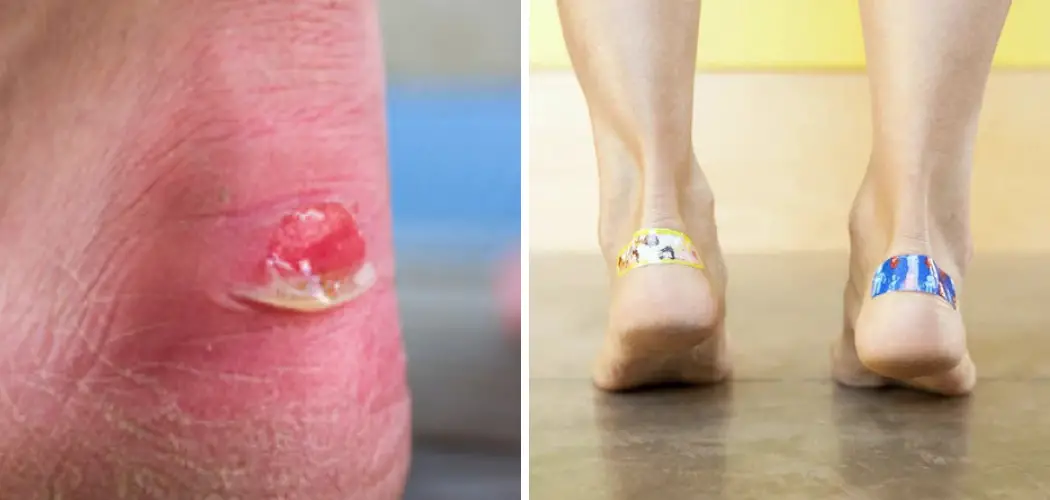Blisters can turn the excitement of wearing new shoes into a painful experience. Whether you’re breaking in a stylish pair of heels or a sturdy set of hiking boots, the friction between your feet and the new material can lead to these troublesome sores. Preventing blisters is key to ensuring comfort and enjoying your new footwear.
This guide on how to prevent blisters new shoes will provide practical tips and preventative measures to help you avoid blisters and keep your feet happy.
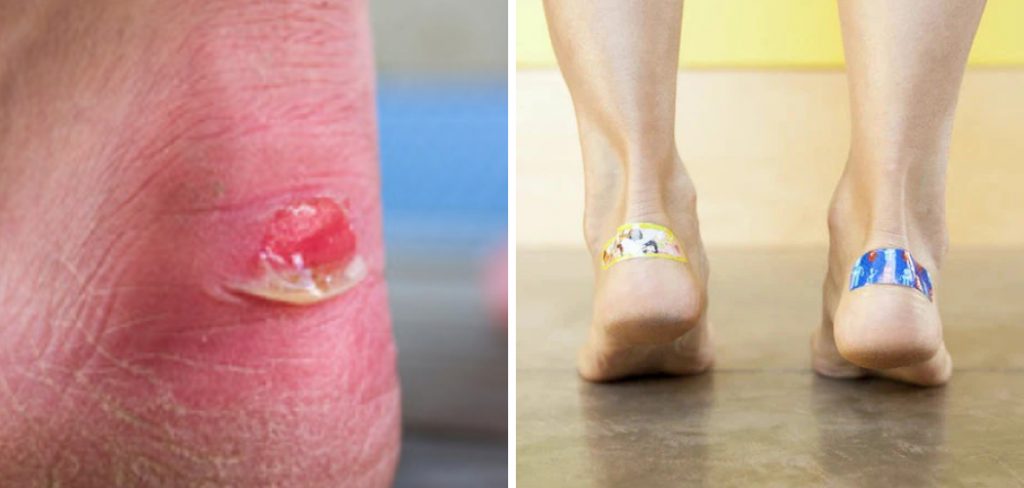
Why Do Blisters Form?
Blisters form as a result of friction between your skin and another surface, such as the inner lining of new shoes. When you walk or run, repeated rubbing creates heat, leading to damage in the upper layers of the skin. In response, your body produces fluid that accumulates under the damaged skin, creating a cushion to protect the underlying tissue. This fluid-filled bubble, or blister, acts as a barrier against further damage while the skin underneath heals.
Excessive moisture and pressure also contribute to blister formation, exacerbating the friction and making the skin more vulnerable to irritation. Understanding these causes can help you take effective steps to prevent blisters when breaking into new footwear.
Necessary Materials
Before you start breaking in your new shoes, make sure you have the right supplies on hand. These include:
Clean Socks:
Choose breathable, moisture-wicking socks made of synthetic materials. Avoid cotton, as it retains moisture and can contribute to blister formation.
Rubbing Alcohol or Blister Pads:
In case a blister does form, these items will help you clean and protect the affected area.
Petroleum Jelly:
You can use this as a lubricant to reduce friction between your skin and the shoes. It also helps keep your feet moisturized.
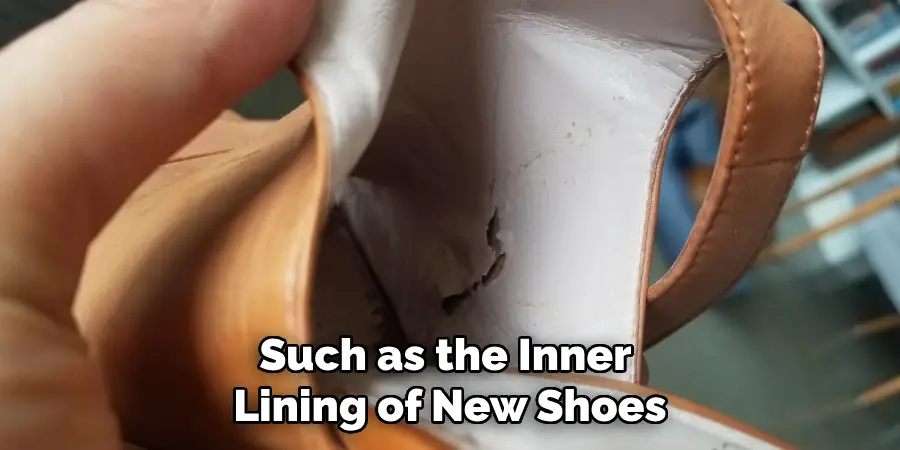
8 Step-by-step Guidelines on How to Prevent Blisters New Shoes
Step 1: Choose the Right Shoes
Selecting the right shoes is fundamental to preventing blisters. Always opt for shoes that fit well and provide adequate support. When trying on new shoes, make sure to walk around the store to gauge comfort. Shoes that are too tight can cause excessive pressure, while shoes that are too loose can lead to more friction due to increased movement.
Consider the shape of your foot and any specific needs, such as arch support or a wider toe box, to ensure a proper fit. Additionally, consider the purpose of the shoes—whether they are for casual wear, athletic activities, or formal occasions—as this will influence the design and structure you need for optimal comfort and blister prevention.
Step 2: Prepare Your Feet
Before putting on your new shoes, make sure your feet are clean and dry. This will reduce the risk of moisture buildup and prevent bacteria from multiplying in moist areas, which can lead to blisters. If you have particularly sweaty feet, consider using an antiperspirant spray or foot powder to keep them dry.
You can also apply a thin layer of petroleum jelly to areas that are prone to blisters, such as the heels or toes. This will act as a barrier against friction and reduce the risk of developing blisters.

Step 3: Wear Proper Socks
As mentioned earlier, choosing the right socks is crucial in preventing blisters. Opt for moisture-wicking, synthetic materials that fit snugly without being too tight. Avoid wearing cotton socks, which trap moisture and increase the risk of blister formation.
Additionally, make sure your socks have minimal seams and are not bunched up inside your shoes, as this can lead to more friction and irritation.
Step 4: Start Slowly
When breaking in new shoes, start by wearing them for short periods and gradually increasing the duration. This will allow your feet to adjust to the new material and prevent excessive friction and pressure that can lead to blisters.
It’s also a good idea to alternate between your new shoes and a comfortable, well-worn pair to give your feet some relief and prevent blisters from forming.
Step 5: Use Moleskin or Blister Pads
If you feel hot spots developing on your feet, immediately apply moleskin or blister pads over the affected area. These can help reduce friction and provide extra cushioning to prevent blisters from forming.
Alternatively, if you don’t have these items on hand, you can also use adhesive bandages or athletic tape as a temporary solution.
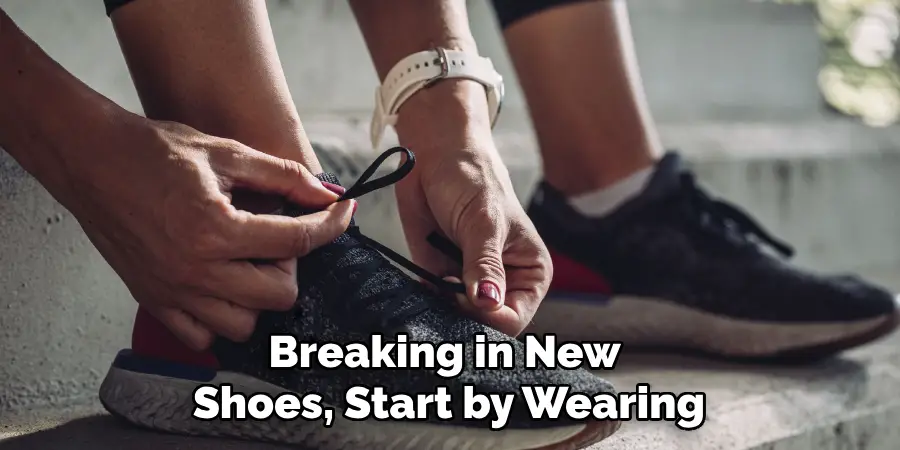
Step 6: Keep Your Feet Dry
Moisture is a major contributor to blister formation. If possible, try to keep your feet dry, especially during the break-in period for new shoes. This can be achieved by using moisture-wicking socks and foot powder, as mentioned earlier.
If your shoes get wet due to rain or other external factors, make sure to dry them thoroughly before wearing them again.
Step 7: Stretch Your Shoes
If your new shoes feel too tight or uncomfortable in certain areas, you can try stretching them out to alleviate pressure and friction. You can use a shoe stretcher specifically designed for this purpose or stuff the shoes with socks or newspaper overnight.
Additionally, avoid wearing new shoes on hot days when your feet may naturally swell, as this can lead to increased pressure and friction.
Step 8: Listen to Your Feet
Above all, listen to your feet and take breaks when needed. If you feel any discomfort or notice redness or hot spots developing, immediately stop wearing the shoes and give your feet time to rest and recuperate.
It’s also essential to regularly check your feet for blisters or other signs of irritation during the break-in period. Catching them early can prevent them from becoming more severe and impacting your ability to wear your new shoes comfortably in the future.
Tips for Preventing Blisters When Breaking in New Shoes
Breaking into new shoes can sometimes lead to painful blisters if not done carefully. By following a few additional tips, you can further minimize the risk of blister formation and enjoy your new shoes more comfortably and confidently:
Tip 1: Gradually Increase Wear Time
Start by wearing your new shoes for short durations, such as an hour or two, and progressively increase the wear time over a week or more. This gradual adjustment helps the shoes mold to the shape of your feet, reducing the chance of blisters.
Tip 2: Avoid Wearing New Shoes for Strenuous Activities Immediately
Refrain from wearing new shoes for activities that involve extensive walking, running, or standing until they are fully broken in. This will help avoid excessive pressure and friction on your feet.
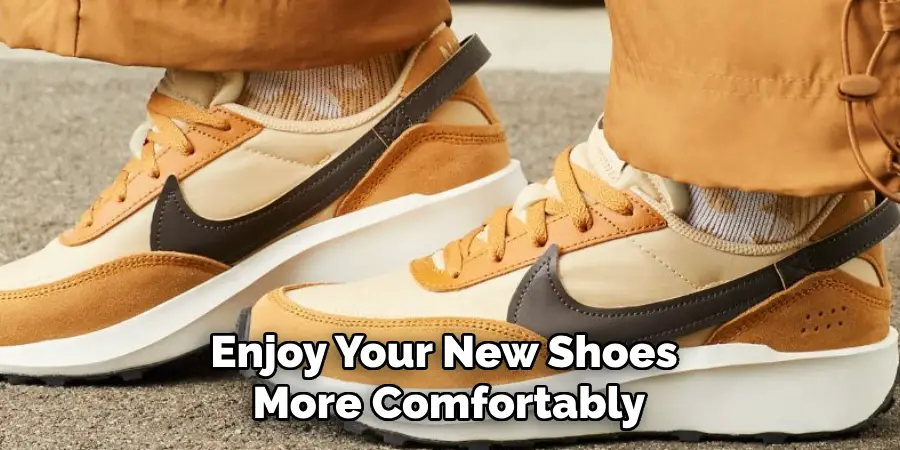
Tip 3: Use Anti-Chafing Products
Applying anti-chafing balms or sticks to areas prone to blisters, such as the heels, toes, and sides of the feet, can reduce friction. These products provide a protective barrier that helps prevent irritation.
Tip 4: Break Shoes In at Home
Before taking your new shoes out for the day, wear them around your house. This controlled environment allows you to easily remove the shoes if you start feeling discomfort, preventing excessive friction.
Tip 5: Consider Professional Stretching
If your new shoes are particularly tight, consider taking them to a professional cobbler for stretching. This can ensure a more comfortable fit and help avoid pressure points that contribute to blisters.
Tip 6: Double Up on Socks
Wearing two pairs of thin socks can reduce friction by allowing the socks to rub against each other rather than your skin. This can be especially useful during the initial break-in period.
By integrating these tips on how to prevent blisters new shoes into your routine, you can significantly lower the risk of developing blisters and make the process of breaking into new shoes a more comfortable experience. Always remember that taking preventative measures and listening to your feet are key to maintaining healthy, blister-free feet.
Frequently Asked Questions
Q: Can I Still Get Blisters Even if I Follow These Steps?
A: While these tips can significantly lower the risk of developing blisters, it is still possible to get them. Every foot is unique, and some people may be more prone to blister formation than others. If you do develop a blister, follow proper blister care techniques to promote healing and prevent infection.
Q: Can I Wear New Shoes for Long Periods Once They Are Broken In?
A: Even after breaking into new shoes, it’s important to listen to your feet and take breaks when needed. It’s also a good idea to alternate between different pairs of shoes to avoid excessive pressure on the same areas of your feet.
Q: How Long Will It Take for My Shoes to Be Fully Broken In?
A: The break-in period can vary depending on the shoe material, your foot shape and size, and other factors. It can take anywhere from a few days to a couple of weeks. Continue wearing your new shoes gradually and listen to your feet for a comfortable fit.
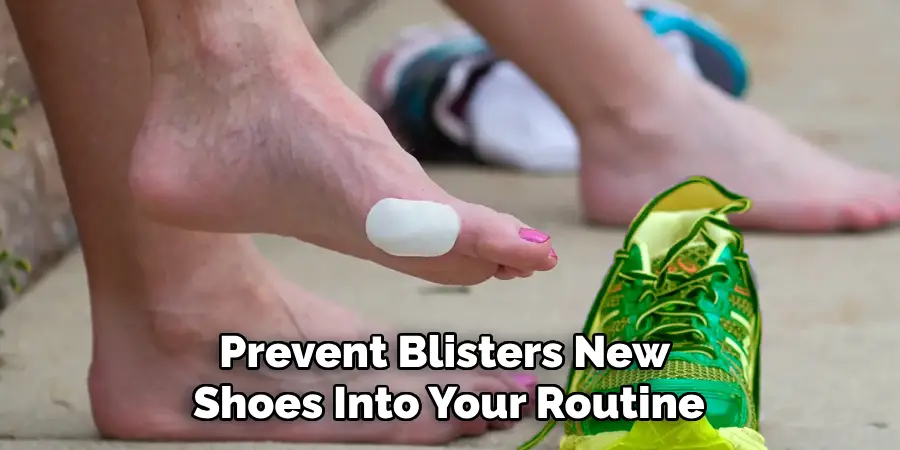
Conclusion
Breaking into new shoes doesn’t have to be a painful ordeal. With the right preparation, materials, and techniques, you can prevent blisters and enjoy your new footwear without discomfort. Remember to choose the right shoes, prepare your feet and socks properly, and gradually introduce your shoes to your daily routine.
By following the step-by-step guidelines on how to prevent blisters new shoes and additional tips provided in this guide, you can make the experience as smooth and pain-free as possible.

